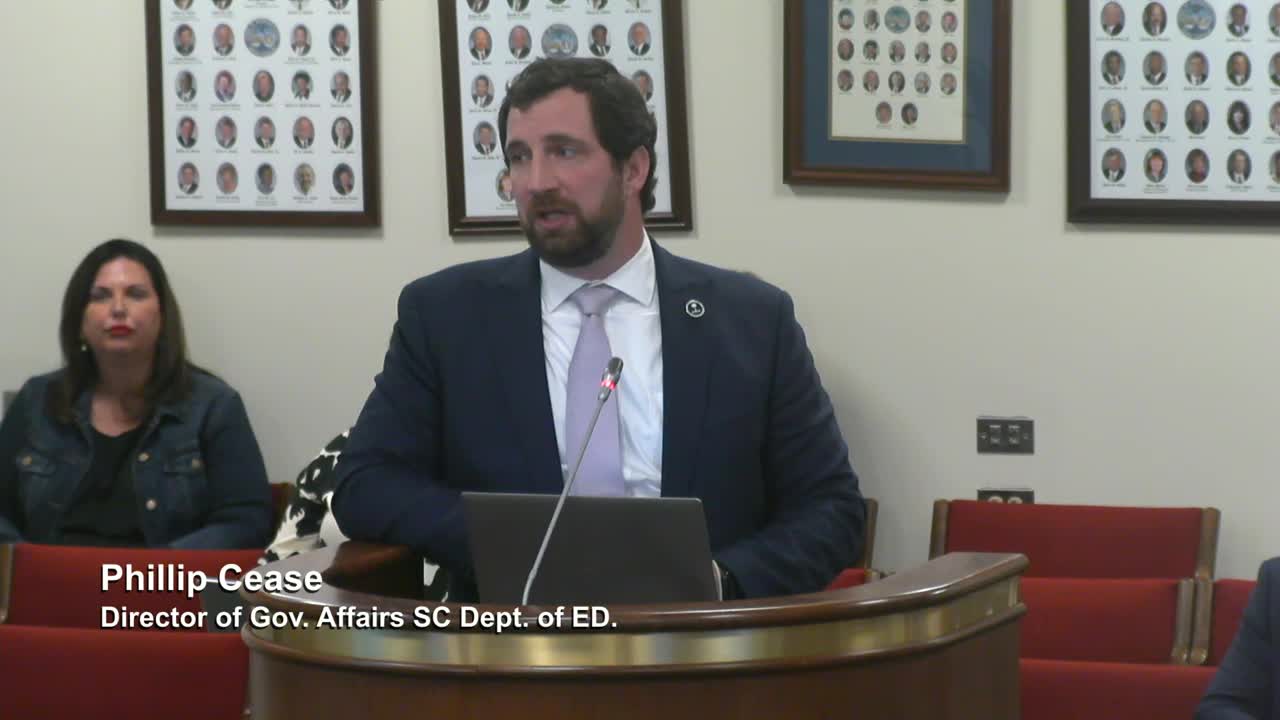South Carolina proposes $100M for school safety upgrades and infrastructure improvements
April 30, 2025 | 2025 Legislative Meetings, South Carolina
This article was created by AI summarizing key points discussed. AI makes mistakes, so for full details and context, please refer to the video of the full meeting. Please report any errors so we can fix them. Report an error »

In a recent meeting of the South Carolina House Ways and Means Committee, significant discussions centered around educational funding and school safety measures, reflecting the state's commitment to improving educational infrastructure and student well-being.
One of the primary topics was the proposed allocation of $100 million in recurring funds aimed at establishing a rural infrastructure bank. This initiative is designed to support both rural and charter schools, which often struggle with limited tax bases for new construction and renovations. The funding would also facilitate essential upgrades to school facilities, including security enhancements such as bulletproof glass, window films, and metal detectors. This marks the third consecutive year that the budget has included $20 million for these critical improvements.
The committee also addressed the ongoing need for school resource officers (SROs). Concerns were raised about the adequacy of SRO staffing in schools, with some committee members suggesting that recruitment challenges may be contributing to the issue. While some believe that the problem lies in manpower and hiring qualified individuals, others noted that many current SROs are dedicated to their roles and enjoy their work. The discussion highlighted the complexities of ensuring adequate safety personnel in schools, emphasizing the need for effective communication and recruitment strategies.
Another key point of discussion was the implementation of a new cell phone policy in schools. While initial concerns were voiced by parents, feedback from teachers has been largely positive, with many reporting improved classroom environments and reduced distractions. The committee acknowledged the importance of clear communication regarding the policy to alleviate misunderstandings among educators.
The meeting concluded with a focus on the broader implications of these discussions for the future of education in South Carolina. The committee members expressed a shared commitment to fostering a safe and conducive learning environment for students, recognizing that effective funding and resource allocation are crucial to achieving these goals. As the legislative session progresses, the committee will continue to monitor the implementation of these initiatives and gather data to inform future decisions.
One of the primary topics was the proposed allocation of $100 million in recurring funds aimed at establishing a rural infrastructure bank. This initiative is designed to support both rural and charter schools, which often struggle with limited tax bases for new construction and renovations. The funding would also facilitate essential upgrades to school facilities, including security enhancements such as bulletproof glass, window films, and metal detectors. This marks the third consecutive year that the budget has included $20 million for these critical improvements.
The committee also addressed the ongoing need for school resource officers (SROs). Concerns were raised about the adequacy of SRO staffing in schools, with some committee members suggesting that recruitment challenges may be contributing to the issue. While some believe that the problem lies in manpower and hiring qualified individuals, others noted that many current SROs are dedicated to their roles and enjoy their work. The discussion highlighted the complexities of ensuring adequate safety personnel in schools, emphasizing the need for effective communication and recruitment strategies.
Another key point of discussion was the implementation of a new cell phone policy in schools. While initial concerns were voiced by parents, feedback from teachers has been largely positive, with many reporting improved classroom environments and reduced distractions. The committee acknowledged the importance of clear communication regarding the policy to alleviate misunderstandings among educators.
The meeting concluded with a focus on the broader implications of these discussions for the future of education in South Carolina. The committee members expressed a shared commitment to fostering a safe and conducive learning environment for students, recognizing that effective funding and resource allocation are crucial to achieving these goals. As the legislative session progresses, the committee will continue to monitor the implementation of these initiatives and gather data to inform future decisions.
View full meeting
This article is based on a recent meeting—watch the full video and explore the complete transcript for deeper insights into the discussion.
View full meeting